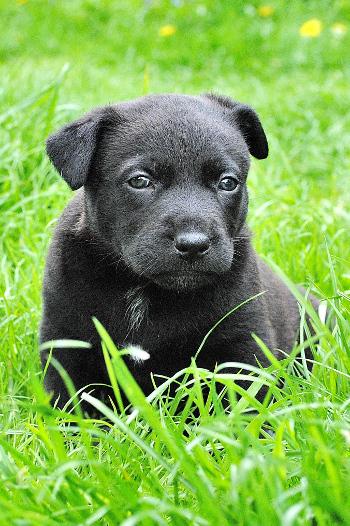Feeding Duffy the dog
Duration/age

Feeding your pets can be a simple task for your child to help you with. Talk with your child about what time you feed your pets.
Now we’ve finished our breakfast, it’s time to feed Duffy. He likes to eat in the morning too.
Show your child what your pet eats and how much to feed it.
Duffy likes half a can of dog food and a handful of dog biscuits. Can you scoop out the food from the can? Now put one big handful of dry food on the top. Let's leave Duffy to enjoy his breakfast.
Is there any water in his bowl? Can you pour some more in so he has plenty to drink? He needs to drink as well as eat.
Talk about the difference between people food and animal food with your child. Do people and animals eat some of the same food or is it always different? Does it smell the same?
Smell the dog food. How do you think that smells? Is it a bit stinky?
Materials you will need
- Bowls
- The dog
- Dog food
Skills this activity improves
Why does this matter?
When your child is helping to feed their pet they will be learning to use different forms of measurement like scoops, cups or handfuls. They might also be counting or using fractions, such as three scoops or half a cup. This will also be helping their language development as they learn and use these words.
Scooping, measuring and pouring all help your child with coordination and fine motor development. It helps them to strengthen their small muscles.
Talking about aspects of pet feeding like why pets have different food to humans or why they don’t eat at the table helps your child to think of a range of possibilities and then to problem-solve.
What does this lead to?
We use measurement in everyday life. When children understand that there are many ways we measure things, they can chose the most appropriate methods to use. If they have a strong sense of how much a cup of dog food is, for example, they will also be able to estimate and make judgements.
Coordination and strong fine motor muscles helps children to be able to write with ease.
Being able to think of alternatives helps children to be able to solve a wider range of problems.
Language to use
- Dog, puppy
- Feed, dinner, breakfast, bowl
- Morning, evening
- Monday, Tuesday, Wednesday, Thursday, Friday, Saturday, Sunday
- Half, quarter, handful, scoop
- Dog food, can, bones, biscuits, dry food
Questions to use
- Is it time for Duffy to eat? Have you fed him yet?
- How many bones will we give Duffy? One big one or two little ones?
- Why does Duffy eat out of a bowl on the floor? Why not at the table with us?
Useful tips
- Remember, even if children are involved in care, an adult always needs to be responsible for the pet.
- If you can't actively supervise pets and children, separate them.
- You might also like to take a look at the Washing Harry the dog activity.
- When you are finished feeding your pet make sure there is time for handwashing.
- Remember to talk to your child in your home language.
Variation by age
Three to five year olds
- If you have more than one child you could make a roster on the calendar for feeding the pets.
- Go to the library and find some books about looking after pets.
Questions to ask
- Whose turn is it to feed Duffy? Let’s look on the calendar.
- What animals make good pets? Would a giraffe be a good pet?
Language to use
- Monday, Tuesday
- Morning, afternoon
- Too big, too small, just right
- Giraffe, tall, neck, trees, leaves


